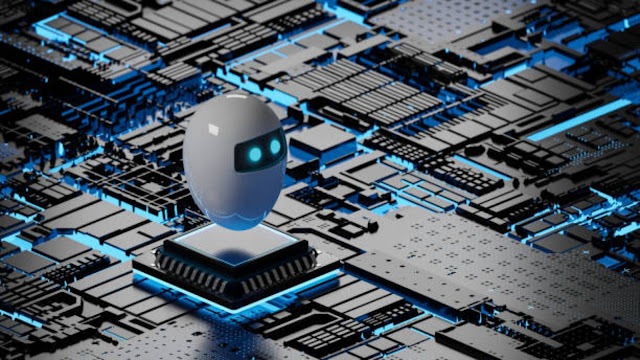Featured
- Get link
- X
- Other Apps
What Is Machine Learning? – Machine Learning Algorithms
.jpg)
Machine learning is a subset of mock intelligence (AI) that
specializes in developing algorithms and statistical fashions that allow
computer structures to analyze from and make selections based totally on facts
with out express programming. It involves using mathematical and computational
techniques to allow machines to investigate and interpret complex statistics
styles, discover traits, and make predictions or decisions, thereby mimicking
the cognitive skills of human intelligence. Machine mastering has won full-size
prominence across various industries, which include finance, healthcare,
retail, and era, because of its capability to derive valuable insights from
huge datasets and facilitate data-pushed choice-making strategies. Let's delve
deeper into the concept of machine getting to know, exploring its key concepts,
applications, and the numerous varieties of gadget studying algorithms which
are instrumental in enabling machines to examine and adapt to evolving records
styles and traits.
Machine learning algorithms are vital additives of the
system getting to know method, as they allow machines to perform specific
tasks, which includes records category, regression analysis, sample reputation,
and predictive modeling, by processing and analyzing massive volumes of
statistics. These algorithms leverage various mathematical and statistical
techniques to become aware of underlying styles and relationships in the facts,
enabling machines to make informed selections and predictions primarily based
at the analyzed records. There are several kinds of machine gaining knowledge
of algorithms, every designed to cope with precise mastering tasks and targets.
Let's explore some of the important thing system learning algorithms and their
applications in diverse domain names:
1. Supervised Learning Algorithms:
Supervised getting to know algorithms are used to teach
machine studying fashions using categorized datasets, in which the enter facts
is paired with corresponding output labels. These algorithms learn to map enter
facts to output labels via figuring out styles and relationships inside the
training records, enabling the version to make accurate predictions or
classifications whilst provided with new, unseen records. Popular supervised
learning algorithms consist of linear regression, logistic regression, guide
vector machines (SVM), selection trees, and random forests, that are
extensively utilized in duties which include regression evaluation, type, and
pattern recognition in various domains, which includes advertising and
marketing, finance, and healthcare.
2. Unsupervised Learning Algorithms:
Unsupervised learning systems are used to analyze and
interpret unlabeled datasets, in which the enter information does not comprise
predefined output labels or categories. These algorithms permit machines to
identify hidden patterns, organization similar statistics factors, and extract
significant insights from unstructured records, with out the need for human
intervention or guidance. Common unsupervised learning algorithms consist of
k-method clustering, hierarchical clustering, and primary aspect analysis
(PCA), that are utilized in responsibilities which include information
clustering, dimensionality reduction, and anomaly detection, facilitating the
exploration and information of complicated facts systems and relationships
within large datasets.
3. Reinforcement Learning Algorithms:
Reinforcement getting to know algorithms are hired to allow
machines to analyze from their interactions with an surroundings and make
sequential selections to obtain specific dreams or objectives. These algorithms
use a trial-and-mistakes method to decide choicest strategies or actions that
maximize cumulative rewards, thereby permitting the gadget to research thru
experimentation and feedback. Reinforcement gaining knowledge of algorithms,
inclusive of Q-mastering, deep Q-networks (DQN), and coverage gradients, find
programs in diverse domain names, which include robotics, gaming, and self
sufficient systems, wherein machines learn how to navigate complicated
environments and carry out obligations thru continuous gaining knowledge of and
variation primarily based on remarks and rewards.
4. Deep Learning Algorithms:
Deep gaining knowledge of algorithms are a specialized
subset of machine learning algorithms that contain the usage of synthetic
neural networks to version complex data representations and hierarchies,
permitting machines to study from huge volumes of unstructured records,
inclusive of photographs, textual content, and audio. These algorithms leverage
more than one layers of interconnected nodes to extract excessive-level
features and styles from uncooked information, permitting the gadget to perform
superior responsibilities inclusive of photo popularity, natural language
processing, and speech synthesis. Popular deep learning algorithms consist of
convolutional neural networks (CNN), recurrent neural networks (RNN), and long
quick-term reminiscence (LSTM) networks, that have revolutionized diverse
domains, along with pc vision, speech popularity, and language translation, via
enabling machines to research and recognize complicated facts styles and
representations.
5. Semi-Supervised Learning Algorithms:
Semi-supervised studying algorithms combine factors of each
supervised and unsupervised mastering methods, permitting machines to research
from a aggregate of categorized and unlabeled facts to improve the accuracy and
performance of the learning process. These algorithms leverage the to be had
labeled facts to guide the learning manner and make predictions, while
additionally making use of the unlabeled facts to become aware of extra styles
and relationships in the dataset. Semi-supervised learning algorithms find
programs in responsibilities which include facts category, information
clustering, and anomaly detection, allowing machines to leverage both labeled
and unlabeled records to decorate the general studying and selection-making
competencies in numerous domains, inclusive of herbal language processing and
image reputation.
In conclusion, gadget learning algorithms play a vital
function in enabling machines to research from facts and make informed
selections and predictions based on the analyzed statistics. From supervised
and unsupervised learning processes to reinforcement mastering and deep
mastering techniques, the various variety of device learning algorithms has
revolutionized diverse industries, facilitating the improvement of wise
structures and packages which could recognize, interpret, and system complex
information styles and traits. As the sector of gadget studying continues to
enhance, the mixing of advanced algorithms and methodologies will further force
innovation and transformation throughout various domains, allowing machines to
carry out complicated obligations and functions that were once considered
distinct to human intelligence.
- Get link
- X
- Other Apps
Popular Posts
The Crucial Role of Outsourced QA inside the DevOps World
- Get link
- X
- Other Apps

